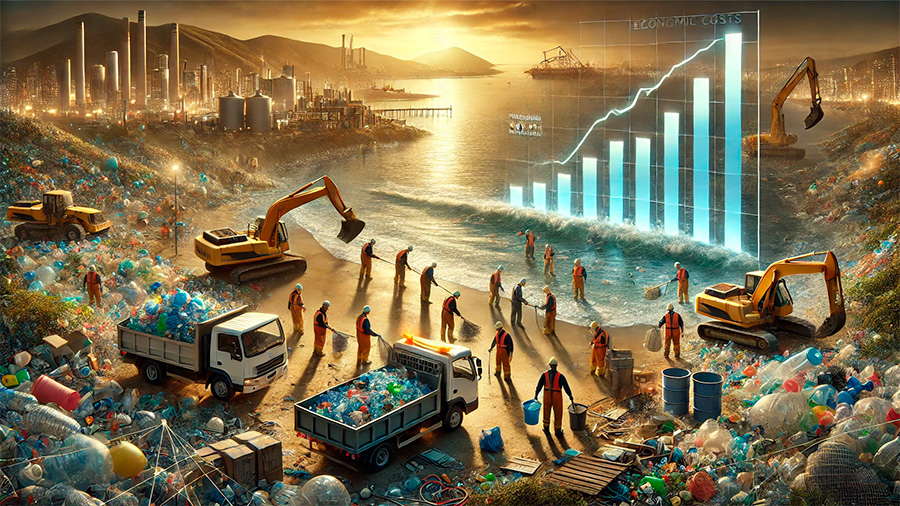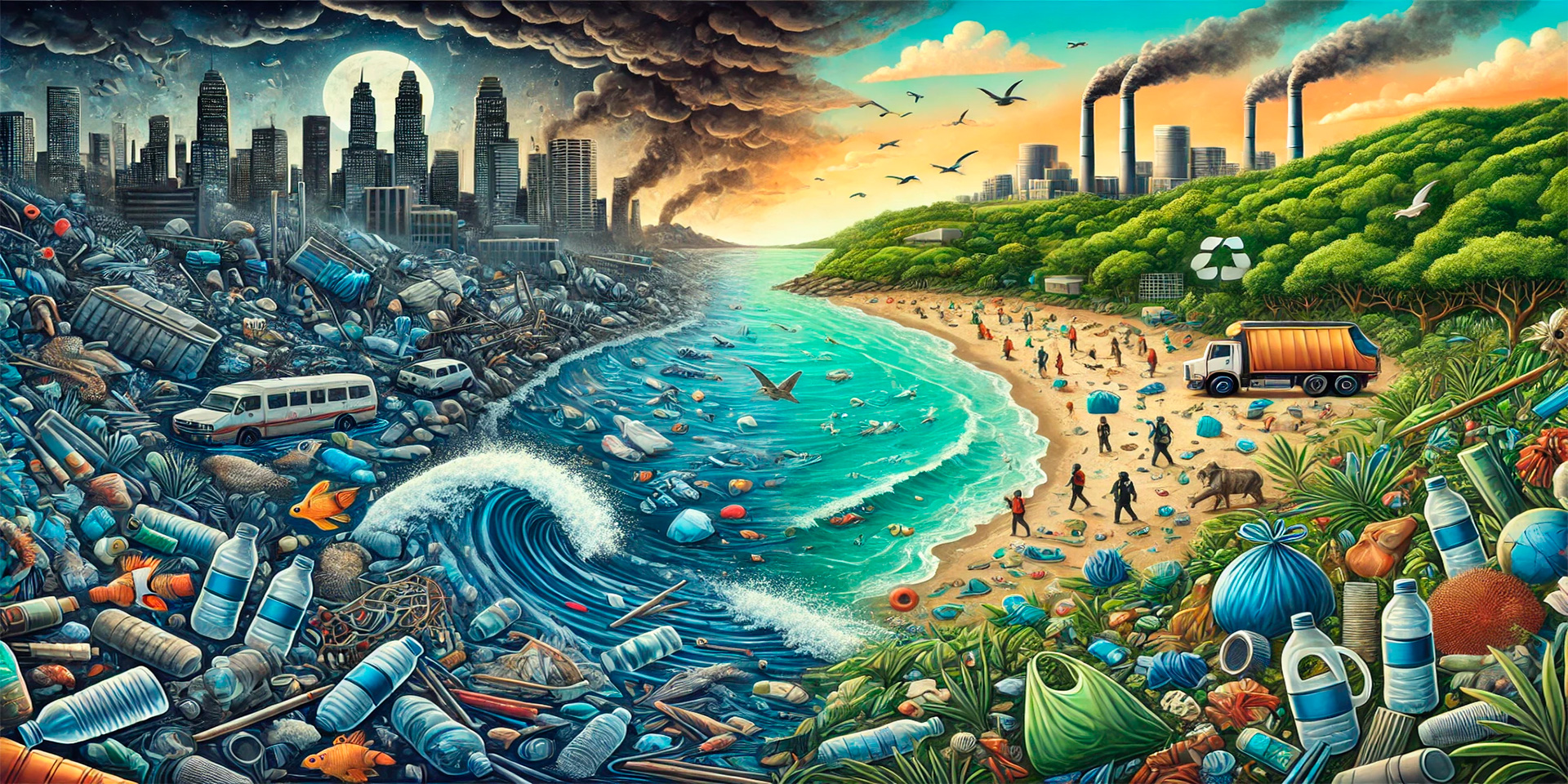The Devastating Impact of Plastic Pollution on Our Planet
Plastic pollution has emerged as one of the most pressing environmental challenges of our time. With billions of tons of plastic waste entering the environment each year, the impact on ecosystems, wildlife, and human health is profound and far-reaching. This article explores the environmental and economic impacts of plastic pollution and the global efforts being made to reduce its footprint. We will delve into the causes, consequences, and solutions to this growing crisis and highlight how industries, governments, and individuals are working together to combat plastic waste.
The Environmental Impact of Plastic Pollution
Plastic pollution affects ecosystems across the globe, from oceans and rivers to forests and urban areas. The durability and ubiquity of plastic make it a persistent environmental contaminant that can take hundreds of years to decompose, during which time it harms wildlife and disrupts ecosystems. The sheer volume of plastic waste, much of it single-use products, continues to burden natural habitats, leading to long-term ecological damage.
1. Harm to Marine Life
One of the most visible and devastating effects of plastic pollution is its impact on marine life. Plastics that enter the ocean, whether through littering, improper disposal, or runoff, can be ingested by marine animals, leading to injuries, illness, or death. Small plastic particles, known as microplastics, are consumed by a variety of marine species, from plankton to whales, entering the food chain and potentially impacting human health.
How plastics harm marine life:
- Ingestion: Marine animals mistake plastic debris for food, leading to internal injuries, suffocation, and death.
- Entanglement: Larger plastic items, such as fishing nets and plastic bags, can entangle marine animals, restricting movement and leading to death by drowning or starvation.
- Microplastics: Tiny plastic particles are ingested by marine life, entering the food chain and posing risks to both animals and humans who consume seafood.
2. Disruption of Terrestrial Ecosystems
While plastic pollution is often associated with the oceans, terrestrial ecosystems also suffer significant harm. Plastic waste accumulates in forests, parks, and urban areas, disrupting plant and animal life. Wildlife that encounters plastic in terrestrial environments may be injured or become entangled, and the long-lasting presence of plastic can degrade natural habitats.
Effects of plastic on terrestrial ecosystems:
- Soil contamination: When plastic waste breaks down in the soil, it leaches harmful chemicals into the ground, potentially affecting plant growth and soil health.
- Threats to wildlife: Animals such as birds, rodents, and terrestrial insects may ingest plastic, which can obstruct their digestive systems and cause malnutrition or death.
- Landscape degradation: Accumulation of plastic waste can disrupt the aesthetics and biodiversity of natural environments, reducing the quality of ecosystems.

The Economic Costs of Plastic Pollution
In addition to the environmental consequences, plastic pollution also imposes significant economic costs on societies worldwide. The production, disposal, and cleaning up of plastic waste require considerable financial resources, while industries such as tourism, fishing, and agriculture face direct impacts from plastic contamination. The economic burden of plastic pollution is immense and continues to grow as plastic waste accumulates globally.
1. Impact on Tourism and Recreation
Tourism is one of the industries most affected by plastic pollution. Beaches, rivers, and forests contaminated with plastic waste can deter tourists, leading to a decline in revenues for local economies that rely on tourism. The costs of cleaning up plastic waste and maintaining attractive, pollution-free environments are also significant.
How plastic pollution affects tourism:
- Decline in visitor numbers: Polluted environments are less appealing to tourists, especially in coastal and nature-based tourism destinations, leading to reduced revenue.
- Cleanup costs: Local governments and businesses spend millions each year cleaning up plastic waste, diverting resources away from other essential services.
- Damage to local economies: In heavily polluted areas, local communities that depend on tourism for income may experience significant economic downturns due to plastic waste accumulation.
2. The Fishing Industry and Plastic Contamination
Plastic pollution significantly impacts the fishing industry, particularly in coastal regions and open oceans. Plastics, including abandoned fishing nets (known as ghost nets), pose a direct threat to fish stocks and the broader marine ecosystem. Fish and other marine organisms ingest plastic debris, leading to contamination and reduced fish populations, which in turn affects fishing yields and livelihoods.
How plastic pollution affects the fishing industry:
- Ghost fishing: Abandoned fishing nets continue to trap and kill marine life, including commercially valuable fish species, resulting in lost catches.
- Contaminated seafood: Fish that ingest plastics may become unsafe for human consumption, leading to lower demand and potential health risks.
- Economic losses: The fishing industry faces increased costs due to the need for cleanup and recovery efforts, as well as reduced productivity due to plastic contamination.
3. Waste Management and Cleanup Costs
The costs of managing plastic waste are enormous. Governments around the world spend significant amounts of money on waste management systems, with a growing portion allocated to handling plastic waste. Landfills are filling up with plastic, and efforts to recycle or repurpose plastics are often ineffective due to contamination, making the recycling process costly and inefficient.
The economic burden of plastic waste management:
- Recycling costs: Recycling plastic is an expensive and energy-intensive process, and most plastics cannot be efficiently recycled, leading to higher costs for waste management systems.
- Landfill capacity: As more plastic waste fills landfills, the cost of waste disposal increases, and landfills themselves face capacity issues, requiring new sites or technological solutions.
- Government expenditure: Governments allocate billions annually for waste management programs, environmental cleanup, and public education on reducing plastic consumption.

Efforts to Reduce Plastic Pollution
The fight against plastic pollution requires coordinated efforts from governments, businesses, and individuals. Several global initiatives and policies have been introduced to reduce plastic production and consumption, while innovative technologies are being developed to tackle the waste already in the environment.
1. Bans on Single-Use Plastics
One of the most direct methods of reducing plastic waste is through the imposition of bans on single-use plastics. Many countries and cities have already banned items such as plastic bags, straws, and bottles, forcing consumers and businesses to seek more sustainable alternatives. These bans are a powerful tool in the fight against plastic pollution, encouraging the shift to reusable products.
Examples of single-use plastic bans:
- Plastic bag bans: Countries such as Kenya, Rwanda, and Ireland have implemented plastic bag bans, significantly reducing plastic waste in urban and rural areas.
- Plastic straw bans: Many cities, including San Francisco and Seattle, have banned plastic straws to reduce plastic waste in oceans and landfills.
- Global plastic bans: The European Union and other nations are pushing forward with plans to reduce plastic packaging and encourage recycling and reuse.
2. Encouraging Recycling and Circular Economy Models
Recycling and the circular economy model are key strategies for managing plastic waste. Recycling programs aim to capture plastic waste and transform it into reusable materials, reducing the need for new plastic production. Circular economy models promote the continuous use of resources by designing products that can be reused, recycled, or composted.
Initiatives to promote recycling:
- Extended producer responsibility (EPR): Many countries are implementing EPR policies, which require producers to take responsibility for the disposal or recycling of their products once they have reached the end of their life cycle.
- Recycling technology: Innovations in recycling technologies are being developed to improve the efficiency and scope of plastic recycling, such as chemical recycling and biodegradable plastics.
- Consumer education: Raising awareness about the importance of recycling and reducing plastic consumption can help reduce the overall environmental impact of plastics.
3. Innovation in Alternative Materials
To reduce reliance on plastics, scientists and businesses are exploring alternative materials made from sustainable sources. Biodegradable plastics, plant-based packaging, and other eco-friendly materials are gaining popularity as alternatives to traditional plastics.
Innovative alternatives to plastic:
- Bioplastics: Made from renewable sources such as corn starch and sugarcane, bioplastics are compostable and provide a sustainable alternative to petroleum-based plastics.
- Edible packaging: In the food industry, edible packaging made from seaweed and other natural materials is being developed to replace plastic wrappers and containers.
- Reusable products: The growing market for reusable bags, containers, and packaging is helping to reduce single-use plastic consumption.
Conclusion
Plastic pollution is a growing environmental and economic threat that requires immediate action from all sectors of society. The impacts of plastic waste on ecosystems, wildlife, and human health are undeniable, and the economic costs associated with managing plastic pollution are significant. However, through coordinated efforts such as bans on single-use plastics, improved recycling programs, and innovations in sustainable materials, we can reduce plastic pollution and move towards a more sustainable, circular economy. It will take the combined efforts of governments, businesses, and individuals to address the challenges of plastic waste and create a cleaner, greener future for the planet.
